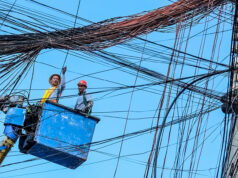PHL e-commerce seen to hit $15 billion by 2025

DESPITE its low penetration rate, the Philippines’ e-commerce sector is anticipated to jump in 2025, with gross merchandise value expected to reach $15 billion.
“The industry remains underpenetrated despite soaring sales,” said Franklin Templeton Emerging Markets Equity’s Senior Research Analyst and Assistant Portfolio Manager Yi Ping Liao and Institutional Product Specialist Claus Born in an analysis e-mailed to reporters on Tuesday.
The e-commerce penetration rate in the Philippines is only 5%. The average penetration rate in Southeast Asia is 6%, with Singapore having the highest penetration rate of 14%, followed by Indonesia at 8%.
The country’s e-commerce market had an estimated gross merchandise value of $4 billion last year, when the coronavirus pandemic started to affect most of the industries.
“The e-commerce wave has altered the retail landscape, leaving many incumbents on the back foot. Physical department stores have lost market share,” the Franklin Templeton Emerging Markets Equity team said.
“Multinational brands leveraging traditional distribution channels to dominate consumer spending have seen increasing competition from small and nimble local brands capturing demand online,” the team noted. “Besides conventional shopping platforms such as Lazada and Shopee…, livestreams and other social media channels have become new tools to win sales.”
The paper also said digital economies in the regions like Indonesia, Malaysia, the Philippines, Singapore, Thailand, and Vietnam offer “immense opportunities,” as they represent a huge addressable market with an overall gross domestic product of around $2 trillion.
Aside from e-commerce, two other areas of the region’s overall digital economy standout: financial technology (fintech) and gaming.
“Underbanked and cash-reliant populations have reeled in an array of fintech companies. Many offer e-wallets as a gateway to access a wider suite of financial products,” Ms. Liao and Mr. Born said.
They said the digital payment gross transaction value in the region could double to $1.2 trillion by 2025. It was $620 billion last year.
As for the gaming sector, the team said: “Successful games have found a global audience. Games are also evolving into social forums integrating chat functions and more modes of entertainment to boost user engagement and monetization potential.”
The region’s gaming market was valued at roughly $5 billion last year, and it is expected to grow to $13 billion by 2025.
Coronavirus travel restrictions “drew even more users to gaming, a pastime that could stick beyond the pandemic,” Ms. Liao and Mr. Born said.
“A flood of capital into Southeast Asia’s internet economy has minted unicorns across the private and public markets.”
“Several private companies have initial public offerings in sight. We expect a string of internet company listings to rejuvenate Southeast Asia’s equity universe, whose old-economy heavyweights have been overshadowed by North Asia’s technology giants,” the team added. — Arjay L. Balinbin



